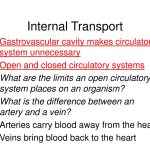What is the Internal Transport Capability? Unlocking the Secrets of Cellular Logistics

Hey there, cellular enthusiasts. Today, we’re gonna dive into the fascinating world of internal transport capability. You might be wondering, what is the internal transport capability and why is it so essential for our cells? Well, buckle up, because we’re about to take a wild ride into the intricate network of cellular logistics.
What is the Internal Transport Capability?
In simple terms, internal transport capability refers to the cell’s ability to move molecules and organelles around the cell, ensuring that everything runs smoothly and efficiently. It’s like a tiny postal service, delivering packages to the right destination at the right time. This process is crucial for maintaining cellular homeostasis, regulating gene expression, and supporting various cellular functions.
The Cellular Highway System
Imagine a bustling city with roads, highways, and traffic rules. That’s basically what’s happening inside a cell. The internal transport capability relies on a complex network of molecular pathways, which serve as highways for the transport of molecules and organelles. These pathways are carefully regulated to ensure that the right molecules reach the right destination, without causing traffic jams or crashes.
Motor Proteins: The Cellular Truck Drivers
Motor proteins are the workhorses of the internal transport capability. They’re responsible for hauling molecules and organelles along the molecular pathways, using energy from ATP hydrolysis. There are several types of motor proteins, each with its unique characteristics and functions. For example, kinesin and dynein are two motor proteins that play a crucial role in the transport of vesicles and organelles along microtubules.
What is the Internal Transport Capability? A Complex Interplay of Mechanisms
So, what is the internal transport capability? It’s not just a simple process of moving molecules around the cell. It’s a complex interplay of mechanisms that involve multiple molecular pathways, motor proteins, and regulatory elements. The internal transport capability is essential for maintaining cellular homeostasis, regulating gene expression, and supporting various cellular functions.
Regulatory Elements: The Cellular Air Traffic Controllers
Regulatory elements, such as G-proteins and phosphatases, play a critical role in orchestrating the internal transport capability. They ensure that the right molecules are transported to the right destination at the right time, without causing chaos or accidents. These regulatory elements are like air traffic controllers, carefully directing the movement of molecules and organelles through the cellular airspace.
The Role of Microtubules in Internal Transport Capability
Microtubules are dynamic structures that play a crucial role in the internal transport capability. They serve as rails for motor proteins to haul molecules and organelles along, ensuring that they reach their destination efficiently. Microtubules are also involved in the regulation of cellular morphology and the organization of the cytoskeleton.
What is the Internal Transport Capability? A Key Player in Cellular Function
So, what is the internal transport capability? It’s a vital component of cellular function, ensuring that molecules and organelles are transported to the right destination at the right time. The internal transport capability is essential for maintaining cellular homeostasis, regulating gene expression, and supporting various cellular functions.
Dysregulation of Internal Transport Capability in Disease
Dysregulation of the internal transport capability has been implicated in various diseases, including neurodegenerative disorders, cancer, and infectious diseases. For example, mutations in motor proteins have been linked to neurodegenerative disorders such as Alzheimer’s and Parkinson’s disease. Similarly, dysregulation of the internal transport capability has been shown to contribute to cancer progression and metastasis.
What is the Internal Transport Capability? A Future Perspective
So, what is the internal transport capability? It’s a complex and dynamic process that is still not fully understood. As we continue to unravel the secrets of the internal transport capability, we may uncover new targets for therapeutic intervention. For example, modulating the activity of motor proteins or regulatory elements may provide novel strategies for treating diseases caused by dysregulation of the internal transport capability.
What is the Internal Transport Capability? In Conclusion
In conclusion, the internal transport capability is a vital component of cellular function, ensuring that molecules and organelles are transported to the right destination at the right time. What is the internal transport capability? It’s a complex interplay of mechanisms that involve multiple molecular pathways, motor proteins, and regulatory elements. As we continue to explore the intricacies of the internal transport capability, we may uncover new insights into cellular function and disease pathogenesis.
Closing Thoughts
What is the internal transport capability? It’s a fascinating world of cellular logistics, where molecules and organelles are transported through the cellular network with precision and accuracy. As we continue to explore this complex process, we may uncover new secrets of cellular function and discover novel therapeutic strategies for treating diseases caused by dysregulation of the internal transport capability.
<